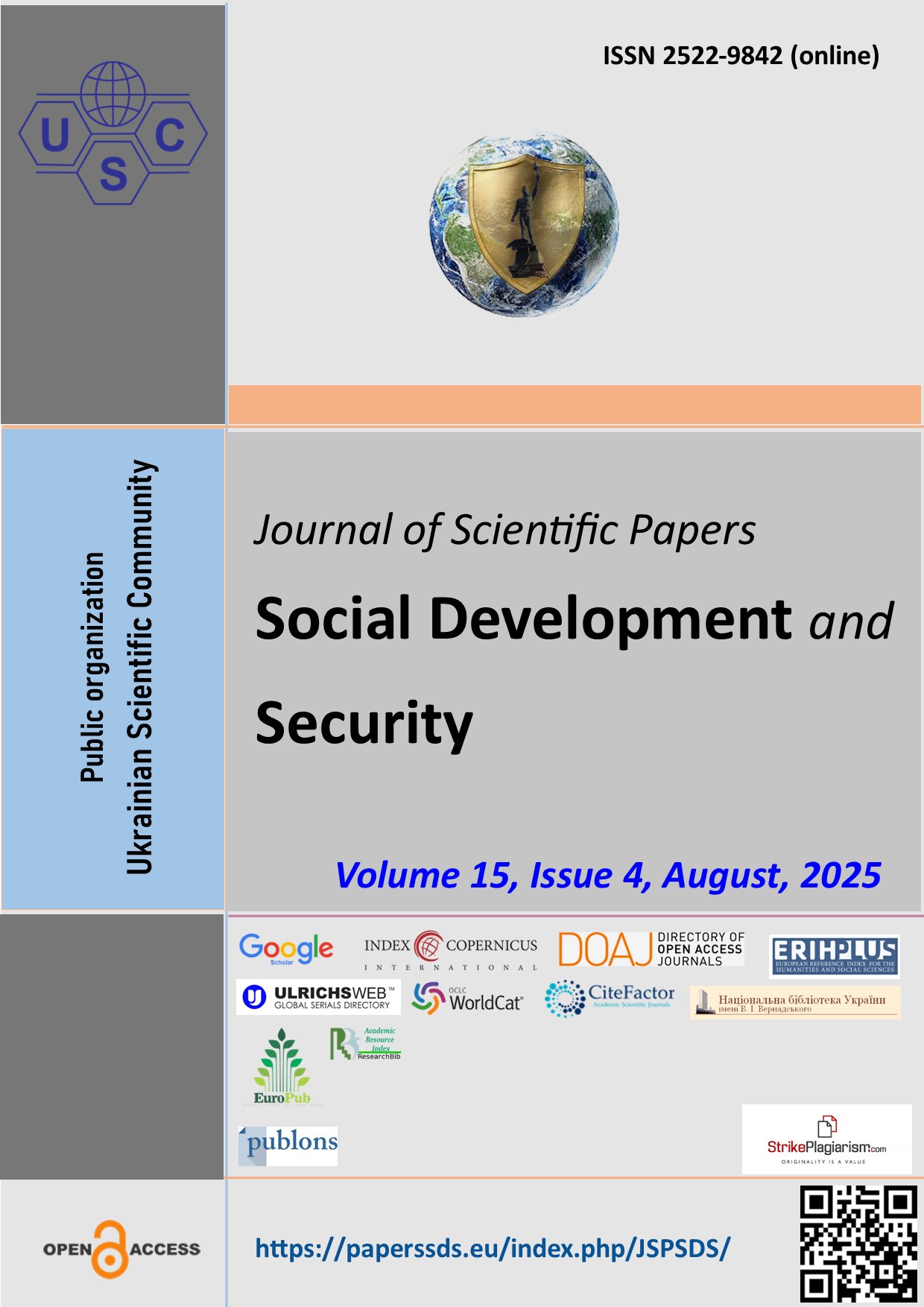Decision Matrix as a Tool for Substantiating Options to Ensure Sufficient National Defense Capacity
Abstract
Purpose. highlight the results of a numerical experiment on decision-making in defence resource management. This allows for a comprehensive assessment of the current state of defence sufficiency, identifying weaknesses and proposing ways to address them effectively.
Method. Analysis, synthesis, comparison, formalization and evaluation of the material, abstraction and conjunctural analysis (thinking).
Findings. The creation of a scientifically based tool (the Decision Matrix) to support management decisions and ensure the defence sufficiency of the state. This tool allows critical weaknesses to be assessed, priority areas of development to be identified, and specific management scenarios to be proposed in order to increase the level of defence sufficiency by concentrating resources on the most vulnerable areas of the national economy.
Theoretical implications. The results of the study can be used to improve theoretical approaches to the formation of a system of criteria and indicators of the state’s defence sufficiency and optimisation of strategic management of defence resources in the context of hybrid threats.
Downloads
References
Bohdanovych, V. (2024). Kontseptualna model i systema pokaznykiv otsiniuvannia rivniv oboronnoi dostatnosti dlia zabezpechennia voiennoi bezpeky derzhavy na osnovi vyznachennia ryzykiv realizatsii kryzovykh stsenariiv. Zbirnyk naukovykh prats Natsionalnoi akademii Derzhavnoi prykordonnoi sluzhby Ukrainy. Seriia: Viiskovi ta tekhnichni nauky, 92(3), 17–26. https://doi.org/10.32453/3.v92i3.1472
Stockholm International Peace Research Institute (SIPRI). (2025, April). Trends in world military expenditure. London: SIPRI. Available from : https://www.sipri.org/sites/default/files/2025-04/2504_fs_milex_2024.pdf
RAND Corporation. (2025, June). Modernizing Department of Defense civilian human resources: Harnessing AI for transformative change. RAND Corporation. Available from : https://www.rand.org/pubs/research_reports/RRA3462-1.html
European Defence Agency. (2025, March). EDA annual report 2024. Brussels: European Defence Agency. Available from : https://eda.europa.eu/docs/default-source/brochures/eda-annual-report-2024.pdf
Syrovatko, V. V. (2025). Transformation of Ukraine’s defense potential under conditions of armed aggression (Doctoral dissertation, Taras Shevchenko Luhansk National University, Poltava). 306 p. Available from : http://dspace.luguniv.edu.ua/xmlui/handle/123456789/11183
Semenenko, O., Abramova, M., Taran, O., Poberezhets, T., Kravchenko, Y., & Palamarchuk, S. (2023). Analysis of the theory and practice of defining, justifying and evaluating the defense adequacy of the state. Social Development and Security, 13(1), 38-51. https://doi.org/10.33445/sds.2023.13.1.5
Malyshev, O. (2021). Capability-based defense planning in Ukraine: Current state and prospects. Collection of Scientific Papers of the Center for Military-Strategic Studies of the National Defence University of Ukraine named after Ivan Cherniakhovskyi, (3-70), 54–61. https://doi.org/10.33099/2304-2745/2020-3-70/54-61
Tkach, M. (2023). Problems of defense management: Theory and practice. In Proceedings of the Scientific and Practical Conference (Kyiv, October 26, 2023). National Defence University of Ukraine. Kyiv. 213 p.
Abstract views: 146 PDF Downloads: 22
Copyright (c) 2025 Oleh Semenenko, Maryna Abramova, Polina Tolok, Оlha Taran, Oleh Tarasov, Mariia Yarmolchyk

This work is licensed under a Creative Commons Attribution 4.0 International License.
The authors agree with the following conditions:
1. Authors retain copyright and grant the journal right of first publication (Download agreement) with the work simultaneously licensed under a Creative Commons Attribution License that allows others to share the work with an acknowledgment of the work's authorship and initial publication in this journal.
2. Authors have the right to complete individual additional agreements for the non-exclusive spreading of the journal’s published version of the work (for example, to post work in the electronic repository of the institution or to publish it as part of a monograph), with the reference to the first publication of the work in this journal.
3. Journal’s politics allows and encourages the placement on the Internet (for example, in the repositories of institutions, personal websites, SSRN, ResearchGate, MPRA, SSOAR, etc.) manuscript of the work by the authors, before and during the process of viewing it by this journal, because it can lead to a productive research discussion and positively affect the efficiency and dynamics of citing the published work (see The Effect of Open Access).
















